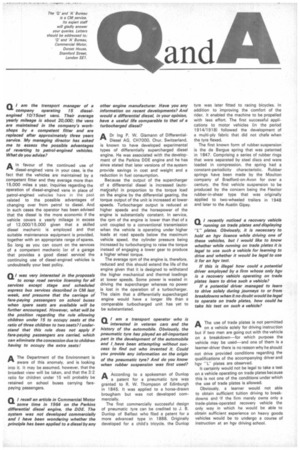Q am a transport operator who is
Page 45

If you've noticed an error in this article please click here to report it so we can fix it.
interested in veteran cars and the history of the automobile. Obviously, the pneumatic tyre has played an all-important part in the development of the automobile and I have been attempting without success to find out who invented it. Could you provide any information on the origin of the pneumatic tyre? And do you know when rubber suspension was first used?
A According to a spokesman of Dunlop
a patent for a pneumatic tyre was granted to R. W. Thompson of Edinburgh in 1845. It was applied to a horse-drawn brougham but was not developed corn mercially. • The first commercially successful design of pneumatic tyre can be credited to J. B. Dunlop of Belfast who filed a patent for a more advanced type in 1888. Originally developed for a child's tricycle, the Dunlop tyre was later fitted to racing bicycles. In addition to improving the comfort of the rider, it enabled the machine to be propelled with less effort. The first successful applications to motor vehicles (in the period 1914/19181 followed the development of a multi-ply fabric that did not chafe when the tyre flexed.
The first known form of rubber suspension is the de Bergue spring that was patented in 1847. Comprising a series of rubber rings that were separated by steel discs arid were loaded in compression, the spring had a constant-periodicity characteristic. Bubber springs have been made by the Moulton company of Bradford-on-Avon for over a century, the first vehicle suspension to be produced by the concern being the Flexitor rubber-in-shear type that was originally applied to two-wheeled trailers in 1948 and later to the Austin Gipsy.




















































































